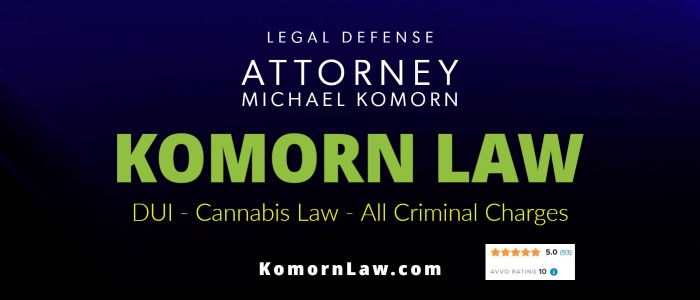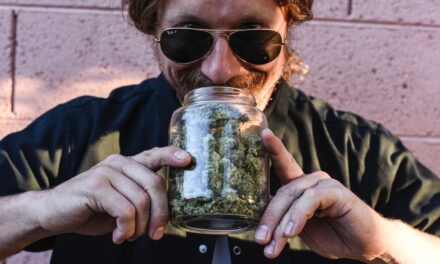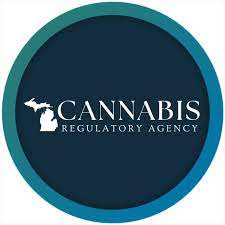SOME History ABOUT Marijuana
Marijuana has been around since the dawn of recorded history. The first documented use of cannabis dates to 7,000 B.C. Marijuana was used as a medicinal herb by the ancient Chinese, Egyptians, Greeks, and Romans for stomach ailments, cramps, and pain. Marijuana, like opium and heroin, originated in Asia. How it found its way to Northern America is somewhat of a mystery. Historians speculate that Napoleon’s troops brought marijuana to Europe in 1804 following the military conquests in the Mediterranean. European immigrants then brought it with them to the New World. Marijuana is thought to have been brought to the Americas by the Spanish conquistadors in the 1500’s and thereafter. Mexican migrant workers brought marihuana across the U.S. – Mexico border in the early 1900’s when they came seeking work.
Marijuana was first used in the U.S. for medicinal purposes in the 1800’s. However, the cannabis (hemp) plant fiber had been in use for thousands of years. Hemp fiber was the main ingredient of the first woven fabric. Hemp was used to make rope, twine, cloth, paper, and more. The hemp picture (above) illustrates just how fibrous the hemp plant is. Prior to the invention of plastic and fiberglass in the early 1900’s, the world was constantly in search of a new and durable source of natural fiber to make paper, rope, and cloth.
Although marijuana had been around for centuries, widespread use of marijuana as a recreational drug did not become widespread in America until alcohol was banned during the Prohibition Era (1920 – 1933). Prior to then, cannabis, as it was called, had been used in the Americas for hundreds of years as a medicine. Once the federal government banned alcohol, marijuana quickly took its place as the recreational drug of choice. Usage soared. After alcohol was made legal again, marijuana use sharply declined.
Where did Marijuana get its name?
Until 1937, marijuana was commonly called cannabis. The word ‘canvas’ originated from the Latin term cannapaceus or “made of hemp.” The “sheets” that powered the sailing ships of old were made of hemp canvas because the sun and salt water rapidly deteriorated cotton fabrics. Sails made of canvas were extremely durable and withstood harsh elements. Canvas was used by the pioneers for their covered wagons on the Oregon Trail and westward journeys. Levi Strauss made Levi Jeans out of old canvas sails. The two drafts of the Declaration of Independence were written on hemp paper, the final one was written on expensive parchment which is made from the dried, cured skin of an animal.
Although the spelling ‘marijuana’ is most common, almost all state and federal laws, including Michigan, use the alternate spelling of ‘marihuana’. Prior to passage of The Marihuana Tax Act of 1937, American’s called marijuana: hemp, ganja, cannabis, or hashish.” The term “marihuana” is thought to have been a slang term, originating from Spanish speaking migrant laborers who worked in the Southwestern United States before the Great Depression.
Mention of marihuana is made in the Spanish cantina song: “La cucaracha, la cucaracha, ya no puede caminar. Porque le falta, porque le falta, marihuana para fumar.”
There is some evidence that the drafters of The Marihuana Tax Stamp Act of 1937 intentionally used cannabis’ slang spelling ‘marihuana’ to avoid an outcry and heated opposition from the medical community and booming hemp industry.
For example, when the Marihuana Stamp Act of 1937 was called for a vote on the floor of the United States House of Representatives, a Representative from New York asked what the Bill was about. The Speaker of the U.S. House of Representatives, Sam Rayburn, replied, “I don’t know. It has something to do with a thing called marihuana. I think it’s a narcotic of some kind.” When asked if the American Medical Association supported the bill, a committee member falsely replied that it did. After this brief exchange the Bill was passed.

Arrested for or Charged with DUI or DRUGGED DRIVING?
Contact Komorn Law 800-656-3557 or Visit the Komorn Law website
In actuality, the American Medical Association strongly opposed the Marihuana Stamp Act of 1937. A representative testified at a Congressional hearing: “We cannot understand yet, Mr. Chairman, why this bill should have been prepared in secret for 2 years without any intimation, even, to the profession, that it was being prepared.” (William C. Woodward, M.D.)
Hemp seed oil was widely used as a lubricant, water repellant, and in the manufacture of paint. Tincture of cannabis was used in a majority of tonics and patent medicines (over-the-counter) in the 1800’s through the early 1900’s, to relieve headaches, muscle aches, and pain. In the year 1935, over 116 million pounds of hemp seed was used for paint or varnish, and in 1938, hemp production was poised to become a billion dollar renewable energy crop.
Japan cut off America’s supply of raw fiber during World War II. Raw fibrous material was needed to make ropes for ships and other war materiel. In response, the same federal government that outlawed hemp and marijuana a few years earlier rushed tons of hemp seeds to farmers and begged them to grow hemp plants The picture above from 1941 shows farmers in front of a huge pile of hemp. The “Hemp for Victory” movie poster can be seen at our marihuana trivia page.
Henry Ford’s “Green” Car.
It is a little known fact that Henry Ford spent considerable time and energy designing a “green” car with an engine that would run on hemp gasoline. He created a prototype car with plastic panels that were made of hemp, wheat, and sisal (henequin) fibers. The panels had an impact strength 10 times that of steel, did not dent, and the car weighed 1000 lbs less than its steel counterpart. Some 60 years later, General Motors used plastic panels for its Saturn cars. After marijuana and hemp were outlawed, products made from fossil fuels, such as gasoline and plastics, took their place.
The States Outlaw Recreational Marijuana Use.
State governments were the first to limit the recreational use of marijuana. The first significant cannabis regulation appeared in 1906 in Washington, D.C. California was the first to outlaw “preparations of hemp or loco weed” in 1913. Other states soon followed: Wyoming (1915); Texas (1919), Iowa (1923), Nevada (1923), Oregon (1923), Washington (1923), Arkansas (1923), and Nebraska (1927).
States which banned the non-medical, recreational use of marijuana were primarily in the south and southwest, where economics and prejudice played a role. During The Great Depression (1929 – 1941), migrant workers from Mexico were no longer needed (nor welcome) in the United States. Since many of the migrant laborers smoked marihuana, it was thought that banning marijuana would encourage them to go back home, thus freeing jobs for unemployed Americans. Other states such as New Orleans, which banned non-medical marijuana usage in 1924, blamed cannabis for its high crime rate.
By 1930, sixteen states had banned the use of marijuana except for medicinal purposes. Elsewhere, recreational usage was legal in every state of the Union.
The Federal Government Criminalizes Marihuana.
The push to ban cocaine and opium (and later marihuana) at the federal level ran into a serious obstacle: the Tenth Amendment to the United States Constitution, which states:
“The powers not delegated to the United States by the Constitution, nor prohibited by it to the states, are reserved to the states respectively, or to the people.”
Amendment X
In short, there was simply no constitutional authority which would allow the federal government to override state laws and the right of the citizens to ingest whatever substance they wanted. It must be remembered the federal government was designed to be a Republic, a government that was only allowed to exercise the limited, specified powers given to it by the Constitution.
A clever idea emerged which would circumvent or do an “end-run” around the Constitutional limitations. Instead of a passing an unconstitutional ban on narcotic drugs, the government would instead use its power to “tax” – and thus regulate – possession and use of whatever it wanted.
The Harrison Act of 1914, which ‘taxed’ cocaine and opiates, was the federal government’s first attempt to criminalize and outlaw narcotic drugs like opium, heroin, morphine, and cocaine. Proponents of the Harrison Act played on populace fears of “drug-crazed, sex-mad negroes” and made reference to negroes under the influence of drugs murdering whites, degenerate Mexicans smoking marijuana, and Chinamen seducing white women with drugs. Medical doctors testified that drugs made blacks uncontrollable, gave them superhuman powers, and caused them to rebel against white authority. One medical doctor brazenly testified at a congressional hearing that: “most of the attacks upon the white women of the South are the direct result of a cocaine-crazed Negro brain.” — Dr. Christopher Koch, State Pharmacy Board of Pennsylvania.
The Federal Bureau of Narcotics (FBN) was established in 1930, and the naming of Harry J. Anslinger as its director was the beginning of the war on marijuana. With the help of newspaper magnate William Randolph Hearst, Anslinger began the campaign to make marijuana illegal at the federal level.
Just as the federal government had used fear, prejudice, racism, and false stories of violence to ‘tax’ cocaine and opium products like heroin and morphine, in 1914, the newly formed Bureau of Narcotics used similar themes of uncontrollable violence and falsities to demonize marijuana. Movies and advertisements ran in theaters and newspapers around the country warning of the evils and dangers of its use: “Beware! Young and Old – People in All Walks of Life! It contains the Killer Drug “Marihuana” – a powerful narcotic in which lurks Murder! Insanity! Death!” Stories were told of people who became insane and uncontrollable criminals as a result of smoking marijuana. Marihuana was repeatedly referred to as “The Devil’s Harvest” or “Devil’s Weed.”
The billboards and movie posters from this era speak louder than words. Remember that the United States as a country was still mired in the Great Depression and about to enter World War II. The patriotic sentiment and faith at the time could not comprehend that the government wouldn’t lie to its citizens. Unfortunately, the evidence uncovered shows that it did just that.
A government financed movie named ‘Reefer Madness’ was released in 1936. Among other things, it showed ‘evidence’ of how the lives of four high school students, lured to try marijuana by a drug pusher, spiraled out of control. The movie included a hit and run accident, suicide, homicide, rape, and a rapid descent of marihuana users into madness. The so called ‘evidence’ in Reefer Madness was later proven to be utterly false. This interesting propaganda movie was thought to have disappeared, but was discovered in the Congressional Archives in the 1980’s. It is available to rent or view through Netflixs or a similar company.
After a two-hour committee hearing and a 92-second debate on the house floor, marijuana was de facto criminalized by Congress with the passage of The Marihuana Tax Stamp Act of 1937, signed into law by President F.D. Roosevelt. A violation of the Tax Stamp Act was a felony with a maximum fine of $2,000 and/or 5 years in prison.
Like the Harrison Act passed twenty-three years earlier, the 1937 Marijuana Act did not make possession or use of marihuana illegal, as this would violate the Tenth Amendment’s limitation on federal power. Instead, the Marihuana Tax Stamp Act required that the person possessing the marijuana have a “tax stamp.”
In a classic Catch-22 situation, it was a legal impossibility to obtain a marijuana tax stamp for recreational use. Why? Because to obtain a tax stamp you had to have the non-tax stamped marijuana in hand. Since you did not have a tax stamp for the marijuana in hand — for which you sought a tax stamp — you were instantly guilty of a five year felony. This same “tax” tactic was used during Prohibition (1920’s) to ban machine guns. Not surprisingly, there was not a single recreational marihuana stamp tax ever issued.
The First Casualties & the Aftermath.
On October 2, 1937, exactly one day after the Marihuana Tax Stamp Act became law, the FBI and Denver police arrested a laborer named Samuel R. Caldwell, age 57, for selling three marijuana cigarettes to a Mexican worker named Moses Baca. FBN Director Anslinger arrived in town for this historic event. Three days later, Baca and Caldwell were indicted and both pled guilty to violating the Marihuana Tax Stamp Act (obviously without legal advice). Baca received an 18 month prison sentence in Leavenworth for possessing a quarter ounce of weed. The sentencing judge’s statements are indicative of the swill that the propaganda machines had been churning out: “I consider marijuana the worst of all narcotics, far worse than the use of morphine or cocaine. Under its influence men become beasts. Marijuana destroys life itself. I have no sympathy with those who sell this weed. The government is going to enforce this new law to the letter.” Samuel Caldwell was given four years hard labor in Leavenworth and fined $1,000. Caldwell died shortly after his release from prison after serving his full sentence.
Marijuana Tax Stamp Act Declared Unconstitutional.
In 1969, the United States Supreme Court finally got around to determining the Marihuana Tax Stamp Act of 1937 was unconstitutional, because it required the person seeking a “tax stamp” to incriminate themselves, a violation of the Fifth Amendment.
The federal government swiftly responded by passing The Controlled Substances Act in 1970, citing ‘interstate commerce’ as its authority. During the turbulent 1960’s, the U.S. Supreme Court had begun allowing the ‘commerce clause’ to uphold federal bills and laws that ultimately created an extremely powerful, central federal government. This consolidation of power came at the expense of the Tenth Amendment and its reservation of power to the states and the people. The federal government has since used the ‘commerce clause’ to justify just about any legislation it wants.
Marijuana has been illegal at the federal level since 1937. The federal government continues to spell marijuana and cannabis “marihuana” and classifies it as a Schedule 1 controlled substance, alongside hallucinogens, LSD, peyote, heroin, most opiates, methaqualone, and ecstasy. According to the Controlled Substances Act, Schedule 1 drugs where:
- The substance has a high potential for abuse.
- The substance has no currently accepted medical use in treatment in the United States.
- There is a lack of accepted safety for use of the drug under medical supervision.
Marijuana Today.
Although the federal government arbitrarily by fiat determined that marijuana had no medicinal use, every study that has been done to date has proven these assertions wrong. Scientific study and research of marijuana began in the 1950’s; each study has concluded that marijuana does have medicinal qualities particularly in management of pain. Surprisingly, unlike standard narcotic pain killers, marijuana is not physically addictive.
The U.S. Supreme Court in 2005 ruled that state laws allowing medical marijuana were subservient to federal laws (the Supremacy Clause). In other words, Congress can ban possession or use of marijuana even when state law expressly allows for it. The tension and conflict continues to mount between the state laws that say “yes” and the federal laws that say “absolutely not.” In response to legalization and taxation of recreational weed in the states of Colorado and Washington, the U.S. Department of Justice issued several policy statements stating that it would not challenge the laws in these states, nor actively prosecute those who are authorized to grow, possess, and use medical marijuana under state laws. However, enforcement is at best sporadic and largely dependent on the local U.S. district attorney.
The result of this schizophrenic and radically opposite policies and laws finds a populace that operates under the faulty assumption they are in compliance with state medical marihuana laws. Then the carpet is yanked out from under them when their homes are busted into at gunpoint, their assets seized and forfeited, and they are charged with serious drug felonies. Since the feds do not recognize any state medical marijuana programs, there is usually little of no defense. Far too many are given lengthy prison terms, even where they had no prior offenses.
Incarceration Nation.
According to the FBI, the the number of incarcerated Americans for drug crimes jumped from 41,000 in 1980 to 858,408 persons for marijuana violations in 2009. More than half (52%) of all drug arrests are marijuana related.
In 1972 the City of Ann Arbor, Michigan (home of The University of Michigan) implemented a radically pro-pot law that made possession of pot within city limits a civil infraction with a token $5 fine (now $25). In 2012 voters in the Michigan cities of Detroit and Grand Rapids passed laws making possession of a small amount of marijuana, whether recreational or not, a civil infraction punishable by a monetary fine ($125). Other cities have passed ordinances making prosecution of marijuana the lowest priority of its police officers.
In 1996 the State of California passed the first medical marijuana law. Since then, nineteen states plus the District of Columbia have followed its lead. California was bold by passing a law allowing medical marijuana, but then again, California has the eighth largest economy in the world and thus wields a tremendous financial clout. In November 2010 California voters narrowly turned down a referendum to decriminalize possession of small amounts. In contrast, voters in the states of Washington and Colorado overwhelmingly passed laws that allow for the recreational use of marijuana in 2012.
2016 Canada becomes the 2nd Nation to legalize adult recreational use of cannabis
2018 Many states have since followed suit and legalized medical use of cannabis or adult recreational use








